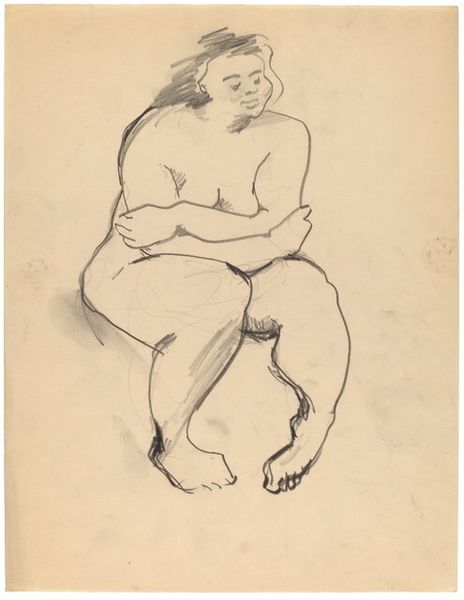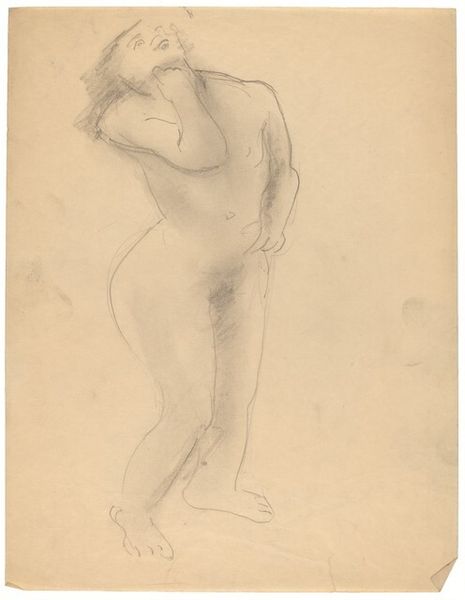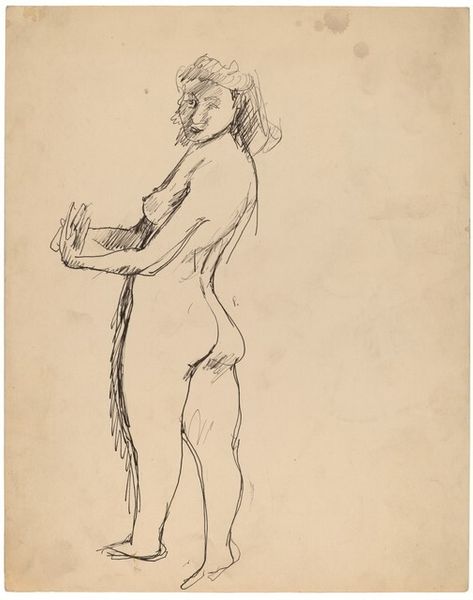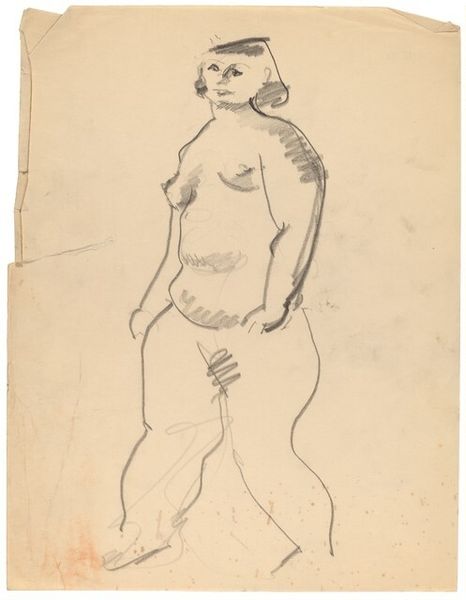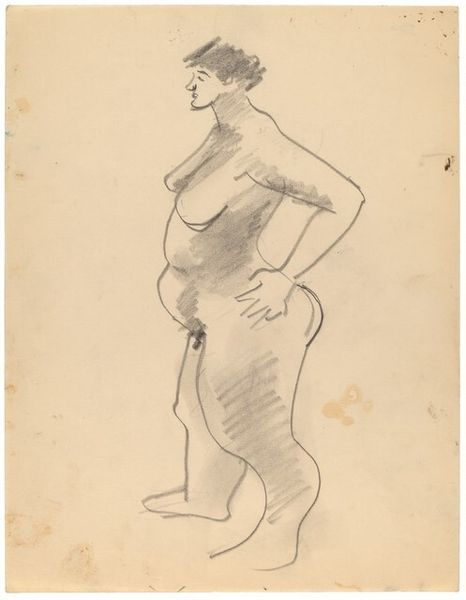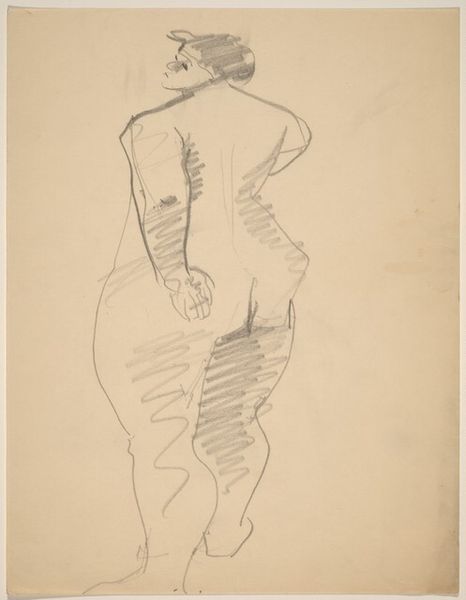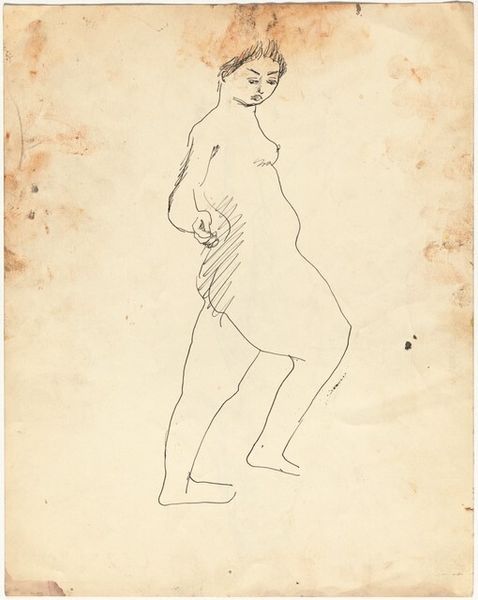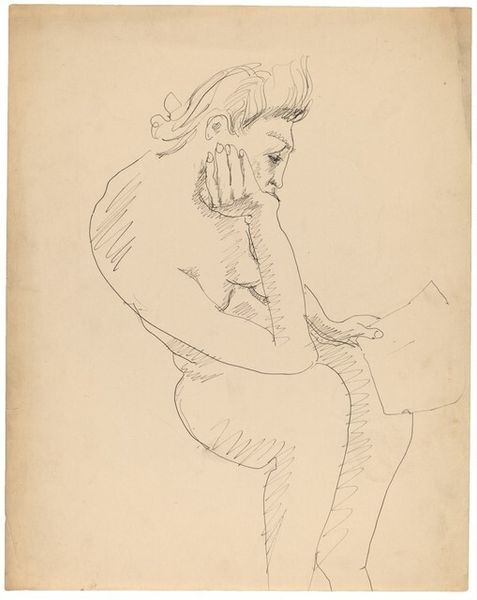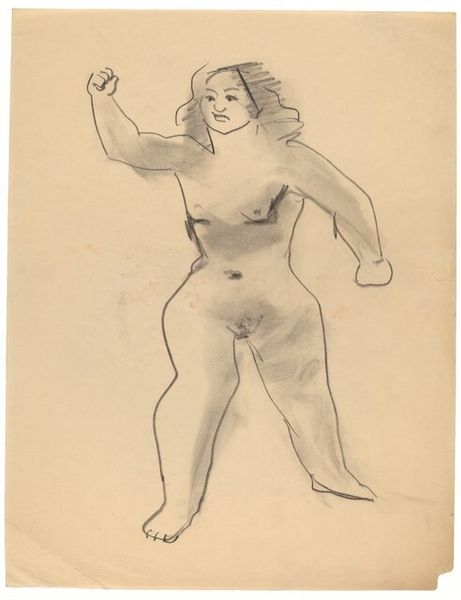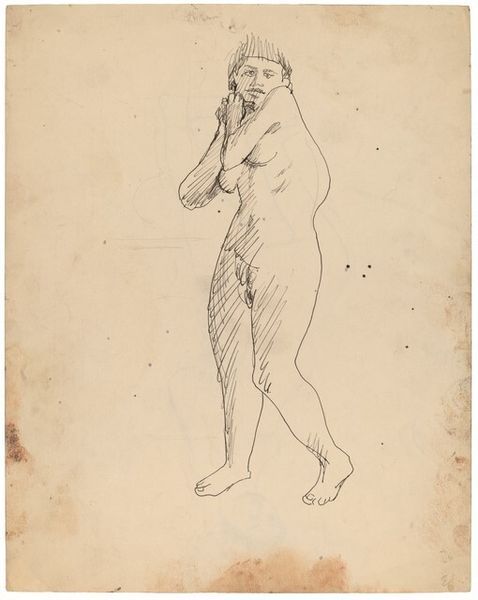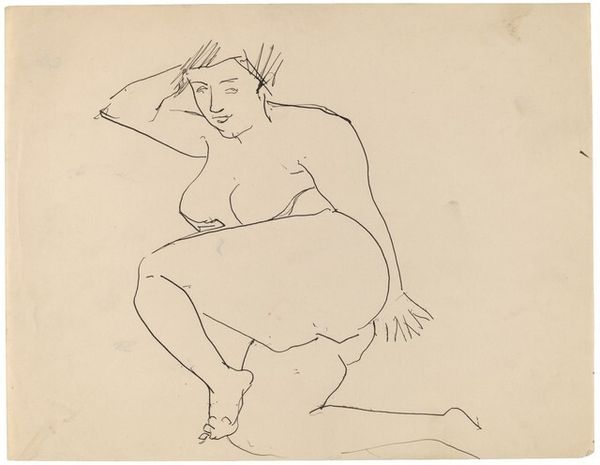
drawing, pencil
#
portrait
#
drawing
#
figuration
#
pencil
#
academic-art
#
nude
Dimensions: overall: 28 x 21.6 cm (11 x 8 1/2 in.)
Copyright: National Gallery of Art: CC0 1.0
Curator: Up next, we have a drawing by Mark Rothko entitled "Standing Female Nude Facing Left, Hands Clasped Behind Back." It’s rendered in pencil. What’s your first reaction? Editor: A sense of constraint. Her posture, the hands clasped tightly behind her… there’s an almost burdened quality to her stance. It feels like a symbolic representation of repressed emotions. Curator: I see that. Given Rothko’s later development of abstract expressionism, where he sought to explore profound emotions through color and form, it is interesting to consider that even in this early figurative work, one could detect similar themes, filtered perhaps through the academic figure drawing tradition that he's emulating. Editor: Absolutely. Though, the averted gaze also makes me think of the psychological weight of being observed, the social expectations placed on the female form, made ever-present by the nude theme. The hand clasp feels a way to protect and hide. Curator: Indeed. These types of academic figure studies served as a gateway for artists. Studying and depicting the human form was crucial, however, the very tradition reinforced social power structures within art institutions and the artist’s own gaze, that now might seem too forceful. Editor: Yes. And perhaps this drawing subtly reveals that tension? The shading is also particularly interesting here; he focuses more on the areas suggesting shadow and pressure—creating that sense of something withheld, an emotion that sits beneath the surface. Curator: Agreed. This contrasts sharply with some more celebratory nudes within art history. The starkness, even rawness of the medium really emphasizes the study nature and suggests more introspection on Rothko’s part as an artist. Editor: Definitely, it acts like a conduit between us and the inner thoughts both of the model and Rothko’s intentions, or how his later practice relates back to the social construction of his beginnings as an artist, through his life and art. Curator: Thanks, I found the focus on cultural continuity from an anthropological view interesting and also very valuable, Editor: And the focus on social contexts and artist positionality gave more insights on understanding cultural expectation versus personal intention in the art. Thank you for an interesting exchange.
Comments
No comments
Be the first to comment and join the conversation on the ultimate creative platform.


